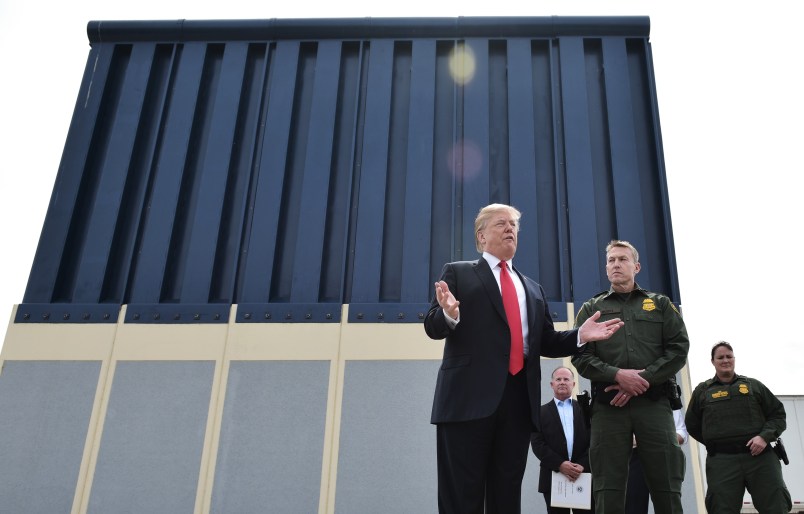WASHINGTON (AP) — The Pentagon is planning to tap $1 billion in leftover funds from military pay and pension accounts to help President Donald Trump pay for his long-sought border wall, a top Senate Democrat said Thursday.
Sen. Dick Durbin, D-Ill., told The Associated Press, “It’s coming out of military pay and pensions. $1 billion. That’s the plan.”
Durbin said the funds are available because Army recruitment is down and a voluntary early military retirement program is being underutilized.
The development comes as Pentagon officials are seeking to minimize the amount of wall money that would come from military construction projects that are so cherished by lawmakers.
Durbin said, “Imagine the Democrats making that proposal — that for whatever our project is, we’re going to cut military pay and pensions.”
Durbin, the top Democrat on the Appropriations panel for the Pentagon, was among a bipartisan group of lawmakers who met with Acting Defense Secretary Patrick Shanahan on Thursday morning.
The Pentagon is planning to transfer money from various accounts into a fund dedicated to drug interdiction, with the money then slated to be redirected for border barriers and other purposes.
More attention has been paid to Trump’s declaration of a national emergency to tap up to $3.6 billion from military construction projects to pay for the wall. The Democratic-controlled House voted last month to reject Trump’s move, and the GOP-held Senate is likely to follow suit next week despite a White House lobbying push.
Senate Republicans met again Wednesday to sort through their options in hopes of making next week’s voting more politically palatable. They are struggling to come up with an alternative to simply voting up or down on the House measure as required under a never-used Senate procedure to reject a presidential emergency declaration. Lawmakers in both parties believe Trump is inappropriately infringing on Congress’ power of the purse.
Senators are increasingly uneasy ahead of voting next week because they don’t know exactly where the money to build the wall will come from and if it will postpone military projects in their home states.
Vice President Mike Pence told senators during their meeting a week ago that he would get back to them with an update. But senators said they don’t yet have a response from the administration.
“It’s a concern,” said Sen. John Cornyn, R-Texas. He said a number of senators have been talking to the White House about other ways the administration could shuffle the money without relying on the authority under the emergency declaration, which is likely to become tied up in litigation.
The pitch is, “Why have this additional controversy when it could be done in a less controversial way?” he said. “Apparently, the White House is not persuaded.”
The Army missed its recruiting goal this year, falling short by about 6,500 soldiers, despite pouring an extra $200 million into bonuses and approving some additional waivers for bad conduct or health issues.
Congress also appropriated money to give members of the military incentive to take early retirement, but enrollment in the program is coming in well under expectations.
“This is pay that would have gone to Army recruits that we can’t recruit,” Durbin said. “So there’s a ‘savings’ because we can’t recruit. The other part was they offered a voluntary change in military pensions, and they overestimated how many people would sign up for it.”







Doesn’t matter where it comes from.
Congress didn’t appropriate it.
It is unconstitutional to use it.
Is that money that would normally stay in these pockets to avoid a future shortfall?
It’s money that could be used to offer better incentives to induce people to volunteer.
The howls from the right-wing fever swamps would be deafening.
Congress usually moves to zero out appropriations that aren’t used in the next bill.
Remember, appropriations don’t mean expenditures. They are the authorization to spend a certain amount of money.
John Cornyn is allways concerned; asshole